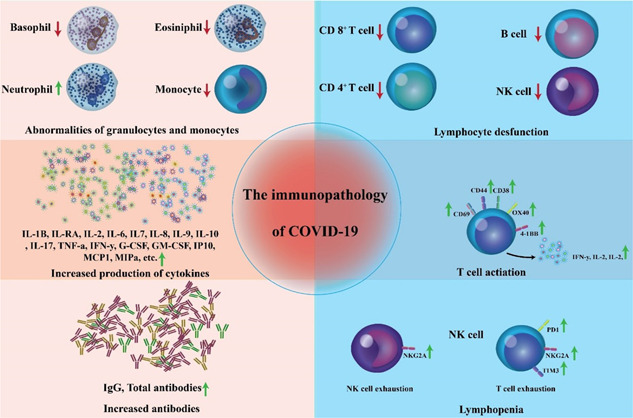Figure 1.

Immunopathogenesis of coronavirus disease (COVID‐19). COVID‐19 immunological characteristics encompass lymphopenia, lymphocyte stimulation and dysregulation, granulocyte and monocyte aberrations, enhanced cytokine secretion, and heightened antibodies. Lymphopenia is a common symptom in COVID‐19 individuals, particularly in severe forms. CD69, CD38, and CD44 are significantly upregulated on CD4+ and CD8+ T cells of these patients. Virus‐specific T cells from severe forms have a central memory profile with elevated amounts of interferon‐gamma (IFN‐γ), tumour necrosis factor α (TNF‐α), and interleukin (IL)‐2. On the other hand, lymphocytes show signs of fatigue due to the high production of PD‐1, TIM‐3, and natural killer group 2A. In serious conditions, neutrophil proportions are substantially higher, while eosinophil, basophil, and monocyte proportions were reduced. Another major feature of severe COVID‐19 is heightened cytokine secretion, particularly of IL‐1, IL‐6, and IL‐10. 82
